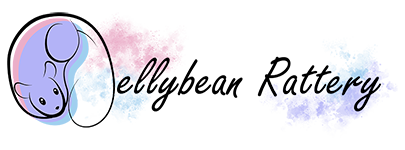Variety-Linked Health Considerations
Written by Rachelle Bish, Jellybean Rattery
There are a number of genes or varieties in fancy rats that come with closely associated health issues. Breeders should, of course, aim to select away from issues and push for the healthiest possible rats. Some of these issues are so intrinsically linked with the variety that removing the issue completely so it reliably never shows up is extremely difficult, if not impossible. This page is here to discuss those varieties so everyone can know what is possible to have pop up when adopting (or breeding) certain varieties. Rats that display these varieties can be perfectly healthy, long-lived rats, especially when gotten from a well-bred line. Adopters should be made aware of the possible issues just so they can be prepared for the worst, though.
Caution, there are some example photos showing what certain health issues can look like.
Coats
Harley
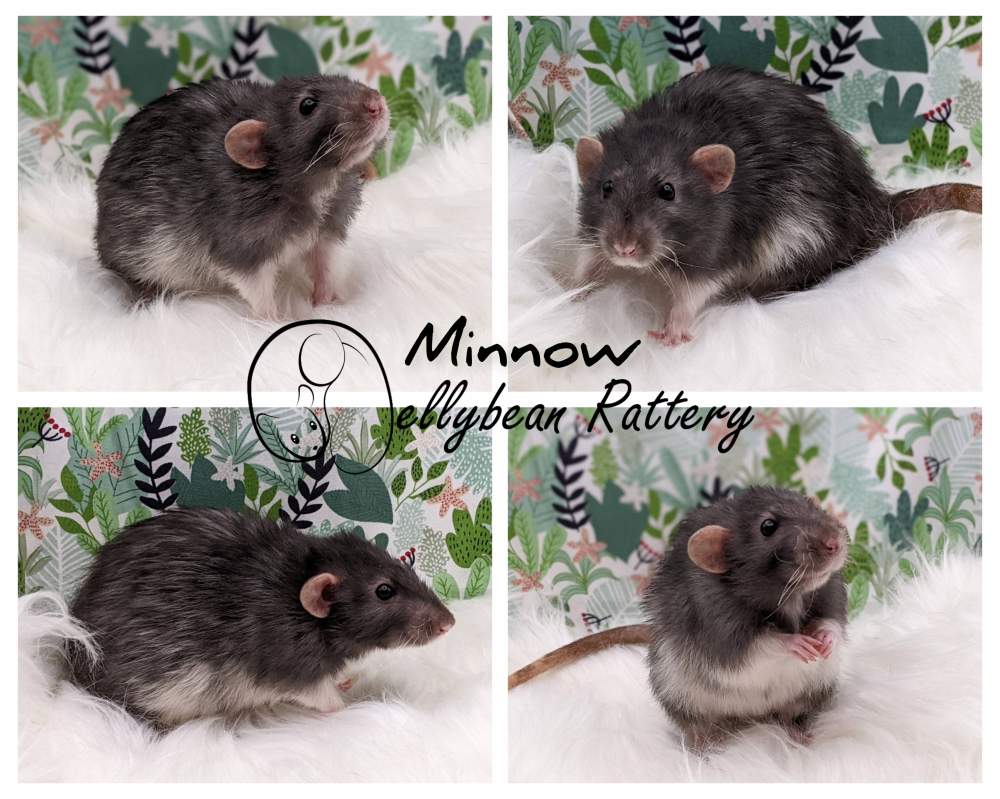
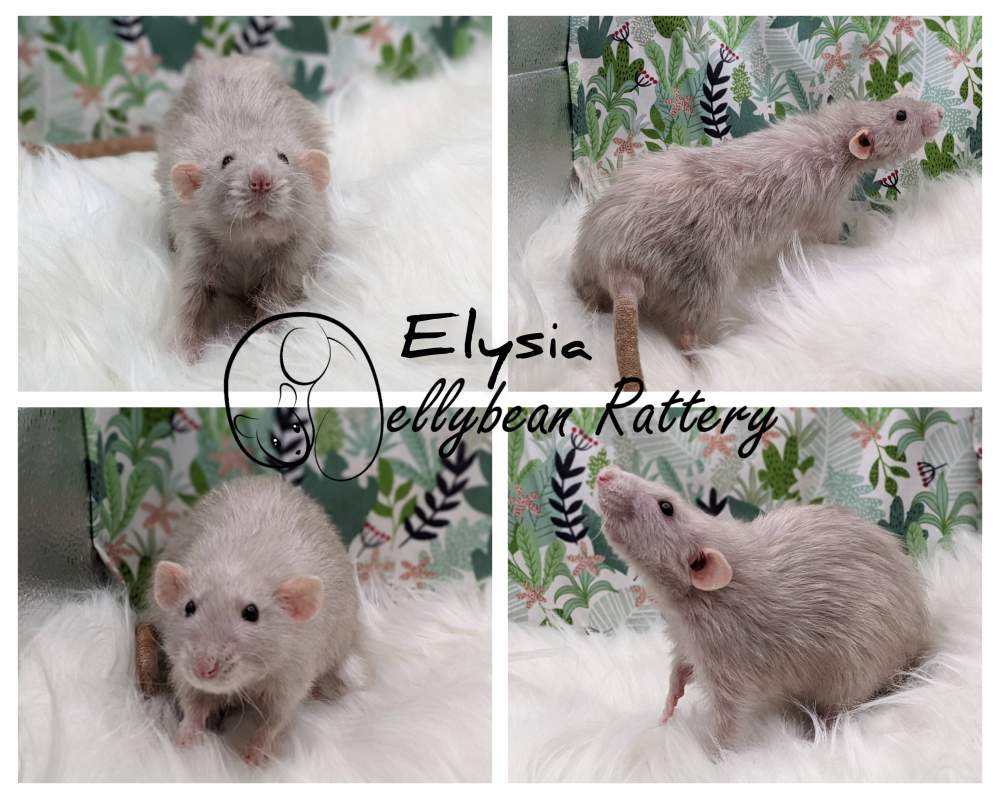
Above, healthy Harleys with big, bright eyes, healthy skin, and healthy coats.
Harley is a recessive gene that causes a long, thin coat and lack of undercoat. Harleys are prone to a number of issues, but they can be dramatically improved by good breeding.
Skin - Harleys are prone to protein sensitivities that cause dry, flaky skin and in severe cases can cause protein sores, scabs, and hair loss. Dedicated individuals are still studying the best practices for Harley, but I'm currently of the belief that the type of protein is more important than the amount of protein. Harley rats require animal-based proteins and fats for healthy skin. For this reason, I require any adopted Harleys to be fed Oxbow Essentials Adult Rat Food or Kalmbach 18%/23% Rodent Diet. Harleys on vegetarian diets, especially diets containing corn, have notably worse skin and fur quality. A Harley that is having an outbreak of dry skin can often be helped with fish oil supplements in their diet. Due to the dry skin, Harleys are also extra susceptible to mite outbreaks. In addition, Harley skin is more easy scratched due to the lack of undercoat.
Eyes - Harleys are prone to a condition called entropion, which causes the eyelashes to grow inward and irritate the eye. This can look like squinty, watery, or swollen eyes, and can lead to infections in the eye. Look for Harleys with big, round, bright eyes.
Immune Health - Harley rats have weaker immune systems compared to other rats. Illness hits them harder and they don't recover as well. They also tend to be smaller and thinner than other rats, not maintaining a good store of fat to get through rough times.
Longevity - Likely due to the weakened immune health, Harley rats tend to have shorter lifespans on average.
Lactation - Harley females commonly have trouble lactating or producing a good milk supply.
Birth - Harley females often have trouble birthing, especially if they have a thinner body shape.
Examples: See examples of the eye issues common to harley, hairless, and werewolf down in the werewolf section.
Recessive Hairless
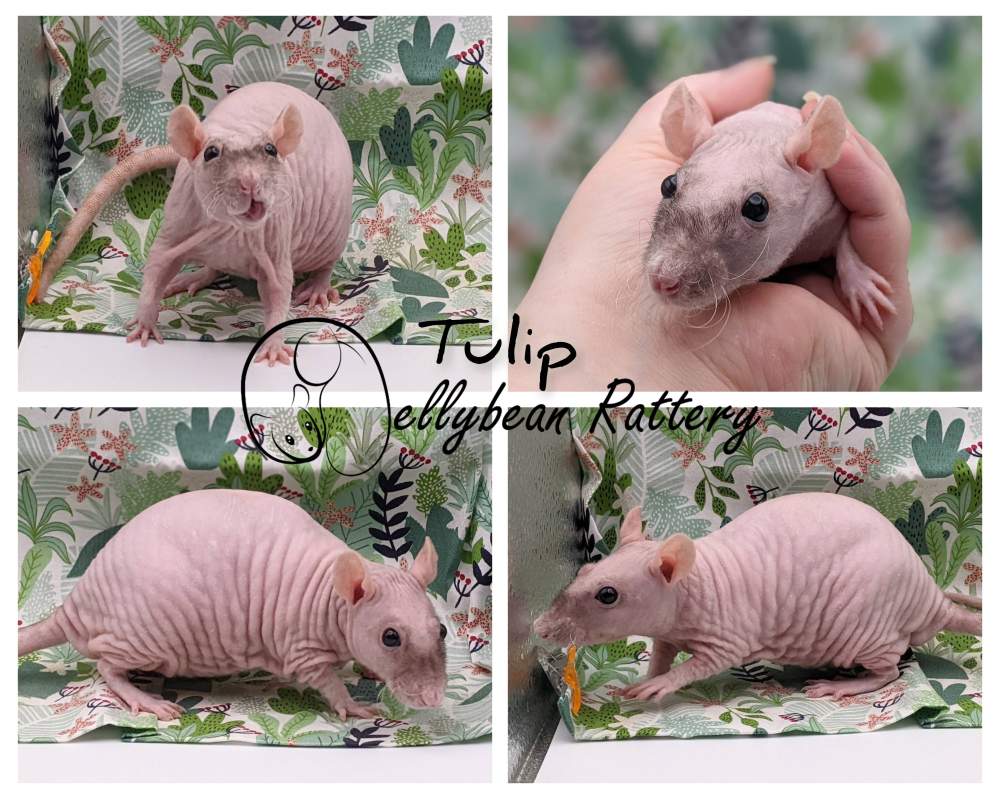
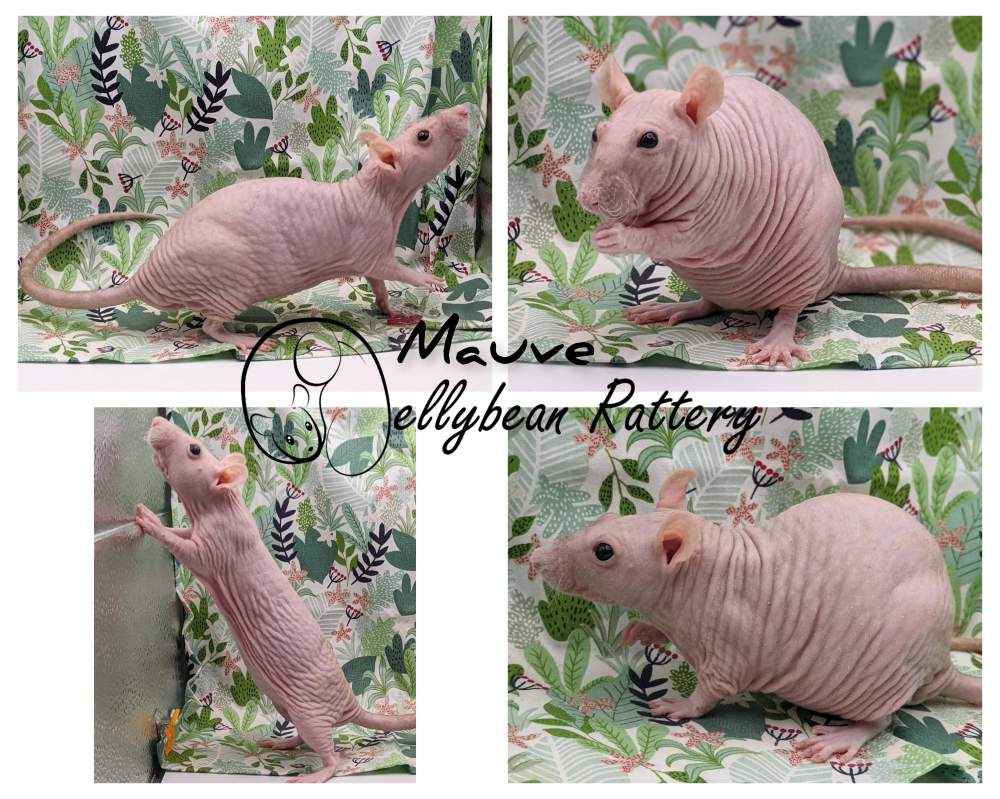
Above, examples of healthy hairless with smooth, healthy skin and big, bright, round eyes.
Recessive hairless causes hairlessness over time. They grow fur while young, then molt it off as they reach their adult coat, usually retaining some fur around their face. Hairless are prone to a number of issues, but they can be dramatically improved by good breeding.
Skin - Hairless rats can have dry, flaky skin. A temporary supplement of healthy fats in their diet usually sorts out issues - I recommend fish oil.
Eyes - Hairless rats are prone to a condition called entropion, which causes the eyelashes to grow inward and irritate the eye. This can look like squinty, watery, or swollen eyes, and can lead to infections in the eye. Look for Hairless with big, round, bright eyes.
Immune Health - Hairless rats have weaker immune systems compared to other rats. Illness hits them harder and they don't recover as well. They also tend to be smaller and thinner than other rats, not maintaining a good store of fat to get through rough times.
Longevity - Likely due to the weakened immune health, Hairless rats tend to have shorter lifespans on average.
Lactation/Nursing - Hairless females commonly have trouble lactating or producing a good milk supply. Due to their lack of fur, they also have a tendency to accidentally smother their babies while laying on them, causes losses.
Birth - Hairless females often have trouble birthing, especially if they have a thinner body shape.
Examples: See examples of the eye issues common to harley, hairless, and werewolf down in the werewolf section.
Werewolf (True Patchwork)




Above, healthy werewolf rats. Note the healthy skin and big, round eyes. Photo provided by Evolution Rattery.
Werewolf is a hairless-adjacent recessive gene that causes the fur to molt out into different semi-symmetrical patterns every couple of weeks, creating a rat that looks different throughout its life. Werewolf are prone to a number of issues, but they can be dramatically improved by good breeding. Werewolf are still a heavily worked on variety with many lines still being severely riddled with health issues.
Skin - Werewolf rats can have dry, flaky skin. A temporary supplement of healthy fats in their diet usually sorts out issues - I recommend fish oil.
Eyes - Werewolf rats are prone to numerous eye issues. One is a condition called entropion, which causes the eyelashes to grow inward and irritate the eye. This can look like squinty, watery, or swollen eyes, and can lead to infections in the eye. Another common issue is the collection of debris under the eyelid, especially the lower eyelid, that can lead to discomfort, infections, and abscesses. Look for Werewolf with big, round, bright eyes.
Immune Health - Werewolf rats have weaker immune systems compared to other rats. Illness hits them harder and they don't recover as well. They also tend to be smaller and thinner than other rats, not maintaining a good store of fat to get through rough times.
Longevity - Likely due to the weakened immune health, Werewolf rats tend to have shorter lifespans on average.
Lactation/Nursing - Werewolf females commonly have trouble lactating or producing a good milk supply. Due to their lack of fur, they also have a tendency to accidentally smother their babies while laying on them, causes losses.
Birth - Werewolf females often have trouble birthing, especially if they have a thinner body shape.
Examples:


Above, examples of entropion and eye issues seen in harley, hairless, and werewolf. First collage generously provided by Crimson Devils Rattery. In these you can see crusty, gummy, squinty, cloudy, irritated, and dry eyes. Second photo provided by Evolution Rattery, showing a werewolf who needs regular cleaning under the eyelid and a swab with the debris that was cleaned out.
Rexoid, Rex & Velveteen, Double Rex
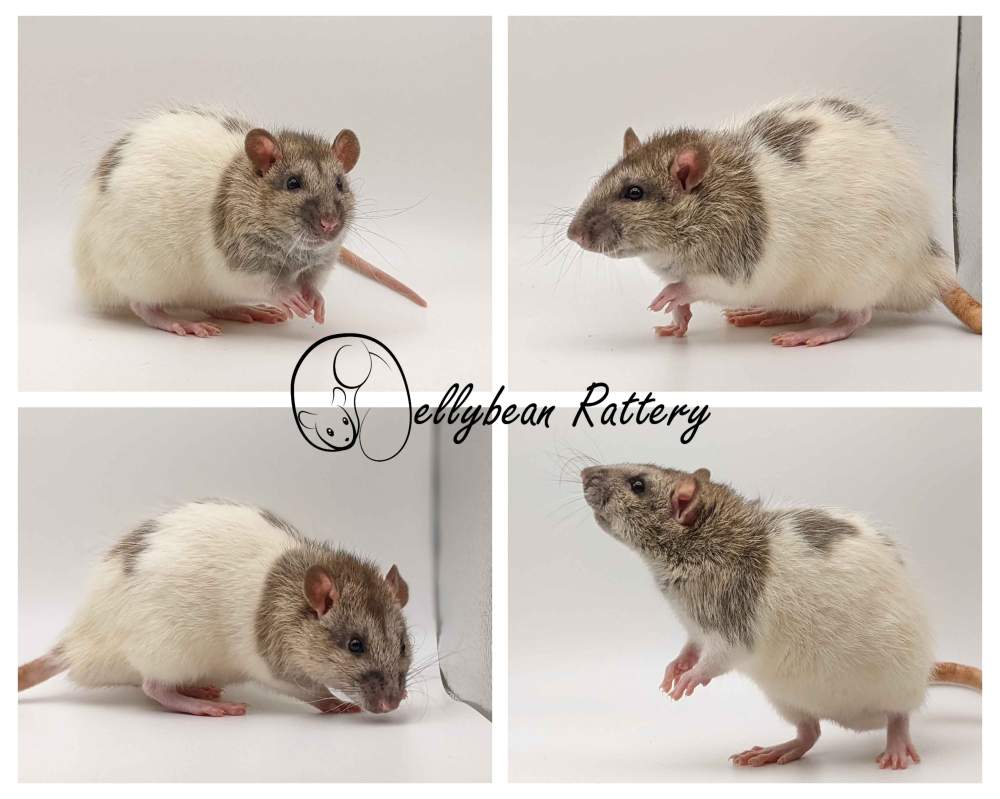
Above, a healthy velveteen.
Rex and velveteen are dominant rexoid genes that cause curly fur. Double rex creates a partially hairless or patchy rat. It is also sometimes incorrectly called patchwork.
Obesity - While not incredibly common, many breeders have noticed a correlation between rexoid rats and obesity or "extra/flabby skin". This does not seem to usually have a huge impact on health, but can later cause increased difficulty moving, hind leg degeneration, and heart failure. This can be bred away from.
Eyes - Double rex on rare occasions can develop entropion, which causes the eyelashes to grow inward and irritate the eye. This can look like squinty, watery, or swollen eyes, and can lead to infections in the eye. Look for double rex with big, round, bright eyes.
Examples:

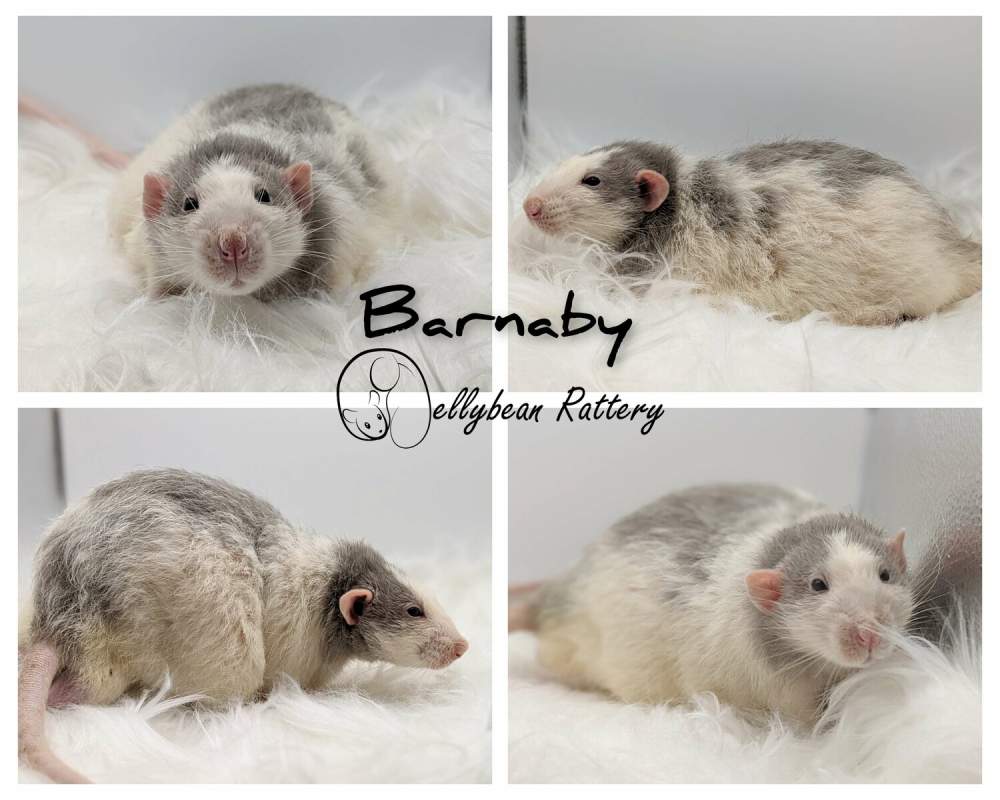
Image 1 shows a velveteen male that grew notably large and somewhat overweight. Image 2 shows a velveteen male that became obese.
Markings/Color Modifiers
Downunder

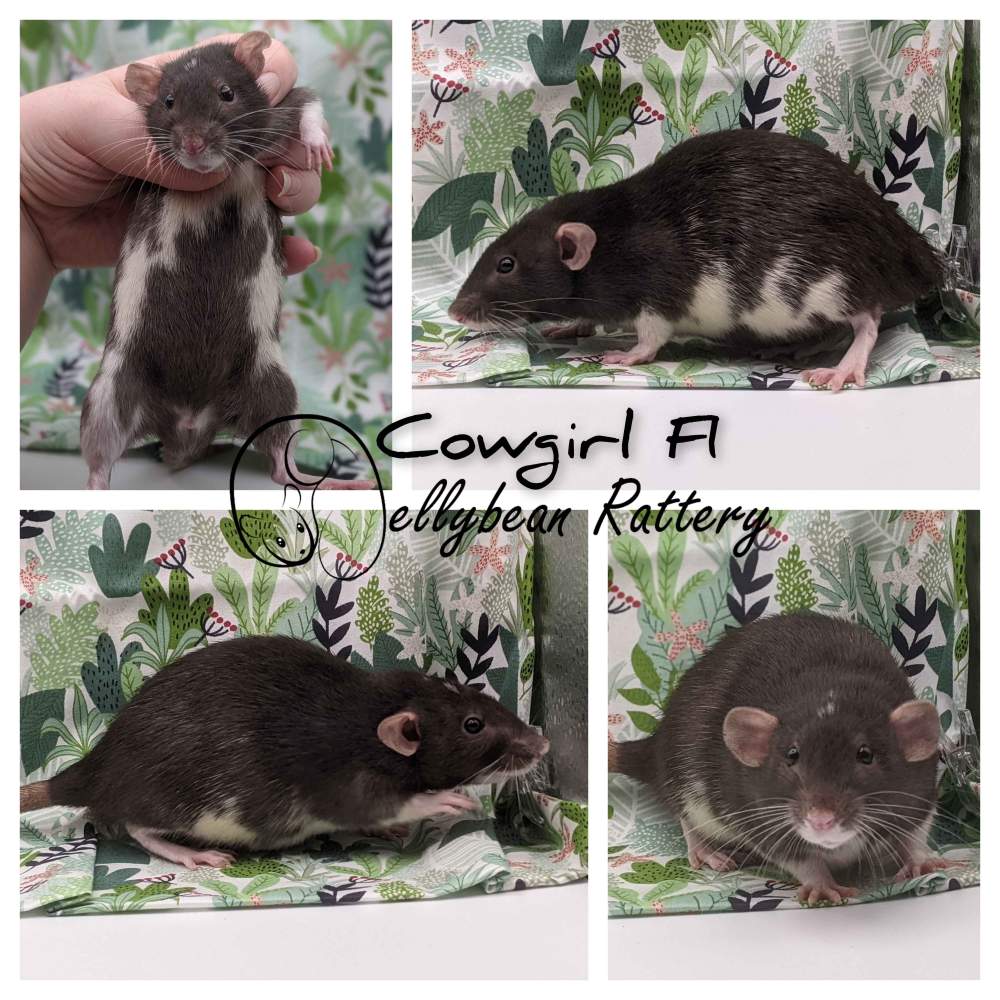
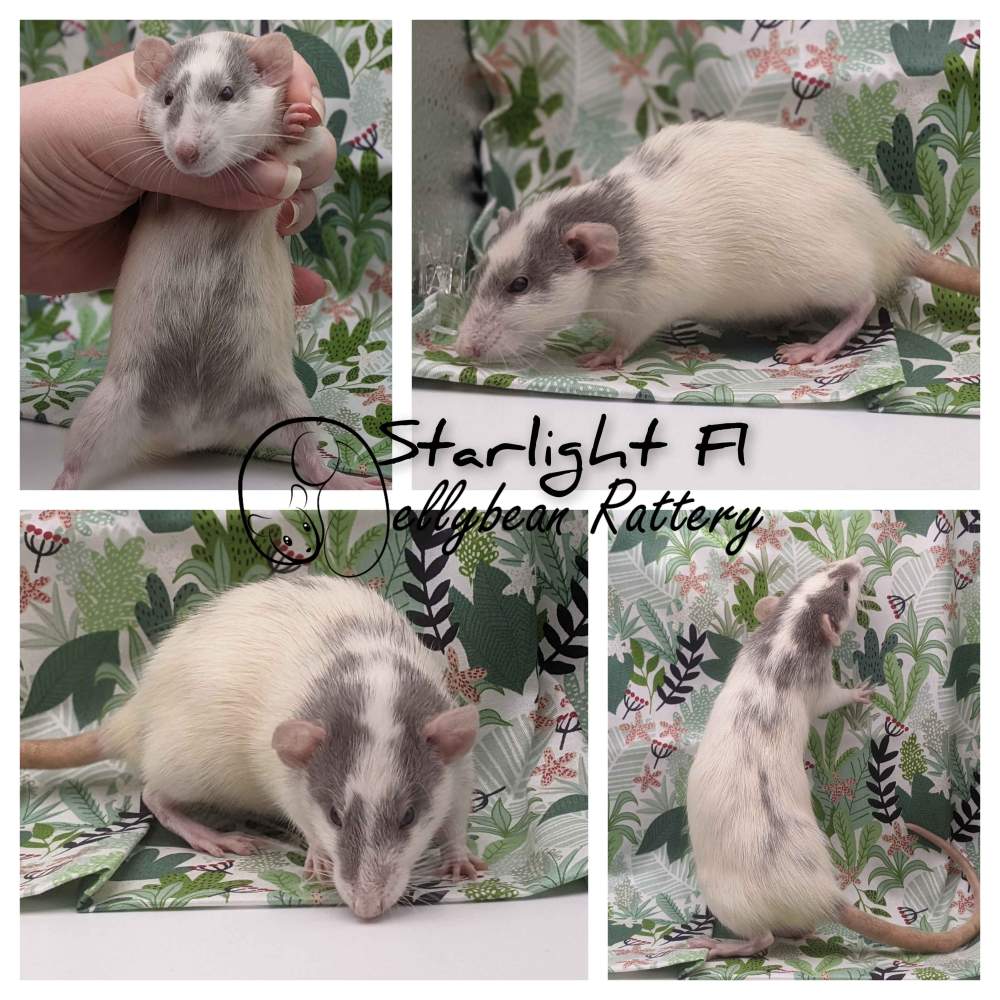

Above, healthy downunders.
Downunder is a homozygous lethal dominant gene that causes color on the back to be mirrored onto the belly. It is harmless to breed downunder to downunder, and may simply result in smaller litter sizes.
Megacolon - Downunder is susceptible to a condition called megacolon, which should be euthanized immediately upon diagnosis. Megacolon is a paralyzation of a section of the intestinal tract, causing the rat to be unable to pass waste so it becomes impacted. It is incurable. This condition almost always develops by 8 weeks of age, sometimes having an onset as late as 12 weeks - very, very rarely it can develop later in life. It appears as extreme bloating and lack of solid stool, often accompanied by a hunched waddling posture, sometimes diarrhea, and urine staining. Sometimes instead of bloating it can appear as a sudden drop in weight, the rat becoming frail. This condition is more likely when the rat is downunder combined with dominant white spotting or dalmatian. Megacolon can be selected away from and there have been cases where it was fully bred out of a line, but often becomes reintroduced if the line is outcrossed.
Examples:



Examples of megacolon. First photo shows a rat with megacolon with bloating and a stained, wet belly from lack of bladder control. Second photo shows a dramatically enlarged abdomen. Third photo shows bloating and poor coat quality due to inability to process food. Last two photos generously provided by Crimson Devils Rattery.
Dominant White Spotting (DWS)






Above, examples of beautiful, healthy DWS markings. First photo provided by Crimson Devils Rattery. Second and third photos provided by A Tale of Tails Rodentry. Fourth and fifth photos provided by Daybreak Rattery. Last photo provided by Ratatouillies Rattery.
Dominant White Spotting, more commonly seen written as DWS, is a gene that dramatically changes how markings develop on a rat, often causing white to be expanded, especially on the head, and creates patches and spots. It generally causes more unique markings and cleaner edges to the markings.
Megacolon - DWS is susceptible to a condition called megacolon, which should be euthanized immediately upon diagnosis. Megacolon is a paralyzation of a section of the intestinal tract, causing the rat to be unable to pass waste so it becomes impacted. It is incurable. This condition almost always develops by 8 weeks of age, sometimes having an onset as late as 12 weeks - very, very rarely it can develop later in life. It appears as extreme bloating and lack of solid stool, often accompanied by a hunched waddling posture, sometimes diarrhea, and urine staining. Sometimes instead of bloating it can appear as a sudden drop in weight, the rat becoming frail. This condition is more likely when the rat is DWS combined with downunder or dalmatian. Megacolon can be selected away from and there have been cases where it was fully bred out of a line, but often becomes reintroduced if the line is outcrossed.
Examples: See examples of megacolon in the Downunder section above.
Black-Eyed White/Fully Marked Hooded Extreme (h^e/h^e, not to be confused with ivory)
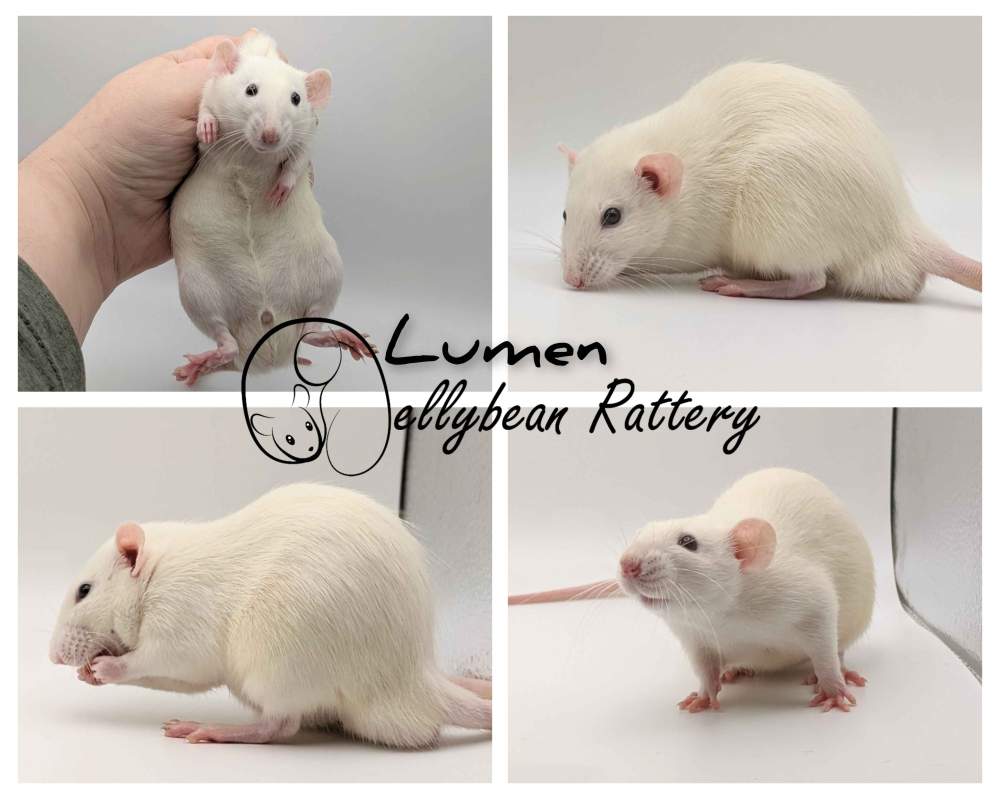
Above, example of an ivory rat. This section refers to Black-Eyed White, not ivory, but ivory has a very similar appearance. True BEW are a brighter, more pure white than ivory - I don't have examples of BEW yet.
Hooded extreme selected for a fully marked (white) rat is usually safe in North American lines. In other parts of the world, you may see:
Deafness - The lack of pigment dispersal sometimes causes deafness.
Blindness - The lack of pigment dispersal sometimes causes blindness.
Neurological Issues - Lack of motor control, balance, and shaking/twitching are sometimes seen in black-eyed white.
Examples: Not visible.
Colors
Red-Eye Dilute (Fawn, Beige)
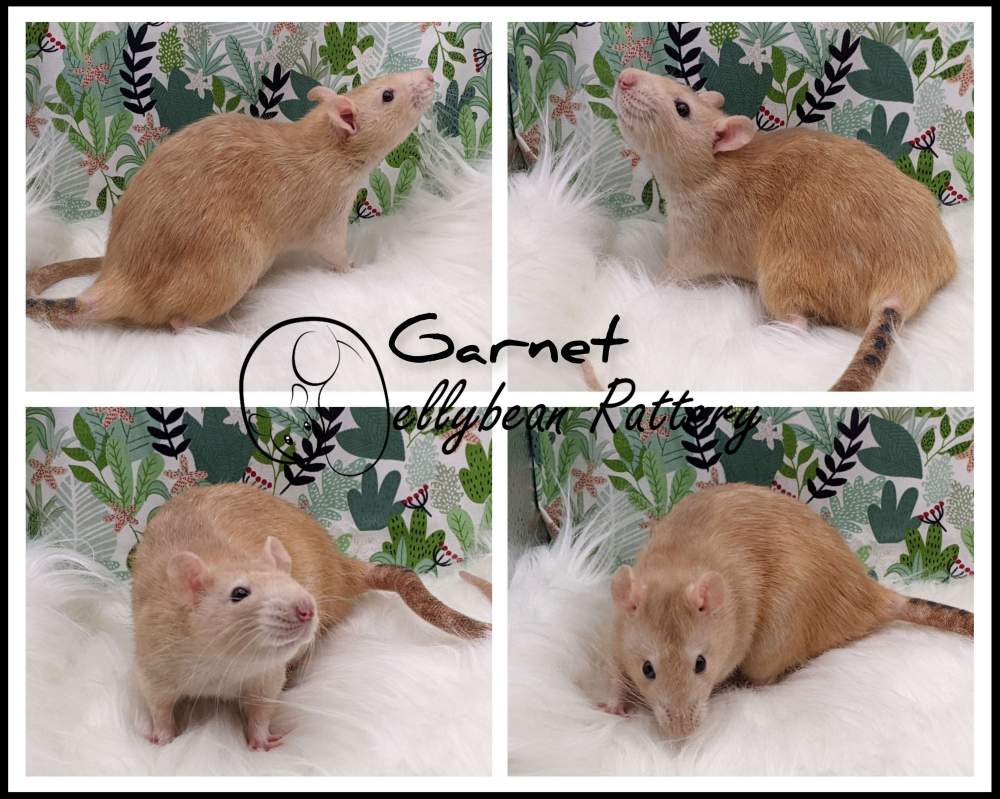
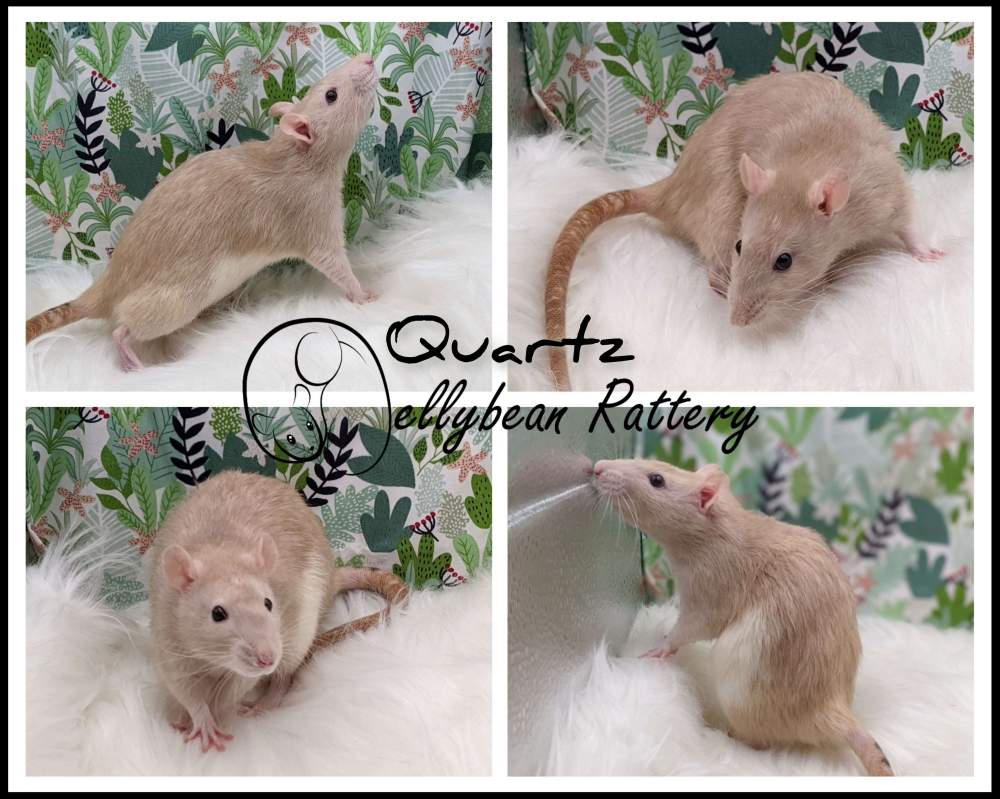
Above, fawn and beige girls.
Red-Eye Dilute is often seen written as RED. It causes a dilution of the coat, removing black pigment and lightening browns and blacks to oranges and yellows.
Hemophilia - RED-displaying rats are prone to a bleeding disorder, causing a much longer clotting time. They are more likely to have complications during labor or surgery. This issue is line dependant and can be bred away from. It only displays with RED-displaying rats, rats from the line that do not display RED will not have this issue. It can be tested for prior to risking a female in pairing by clipping a nail short and timing how long it takes to clot compared to a non-RED and non-blue rat.
Examples: Not visible.
American Blue
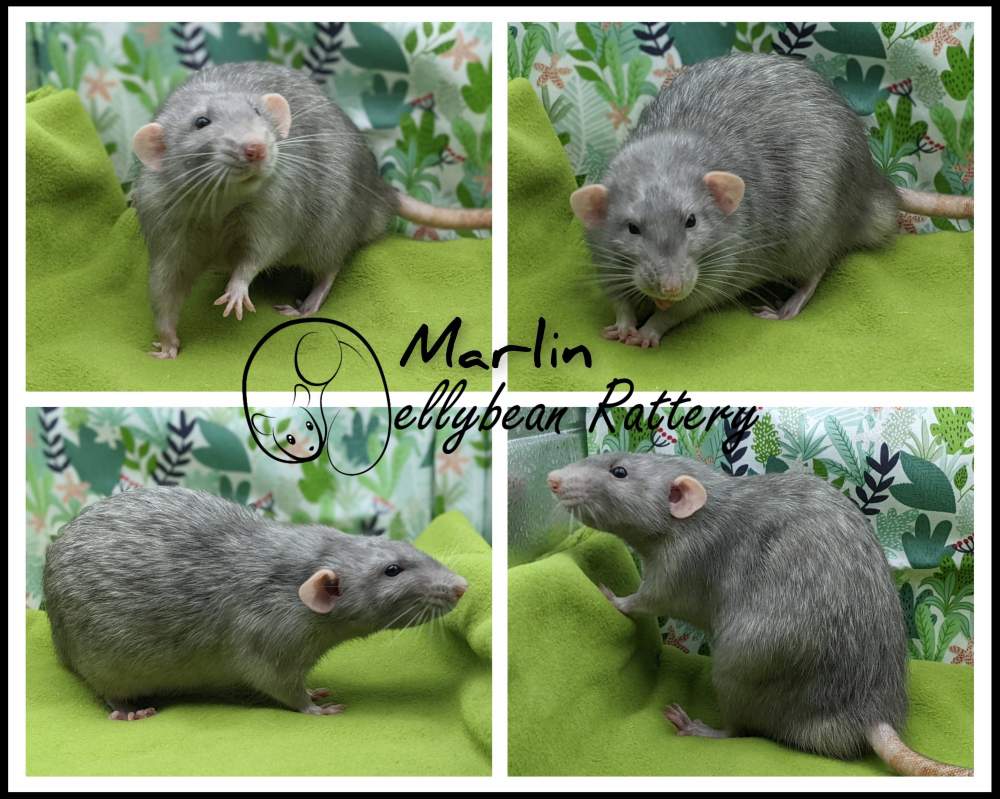
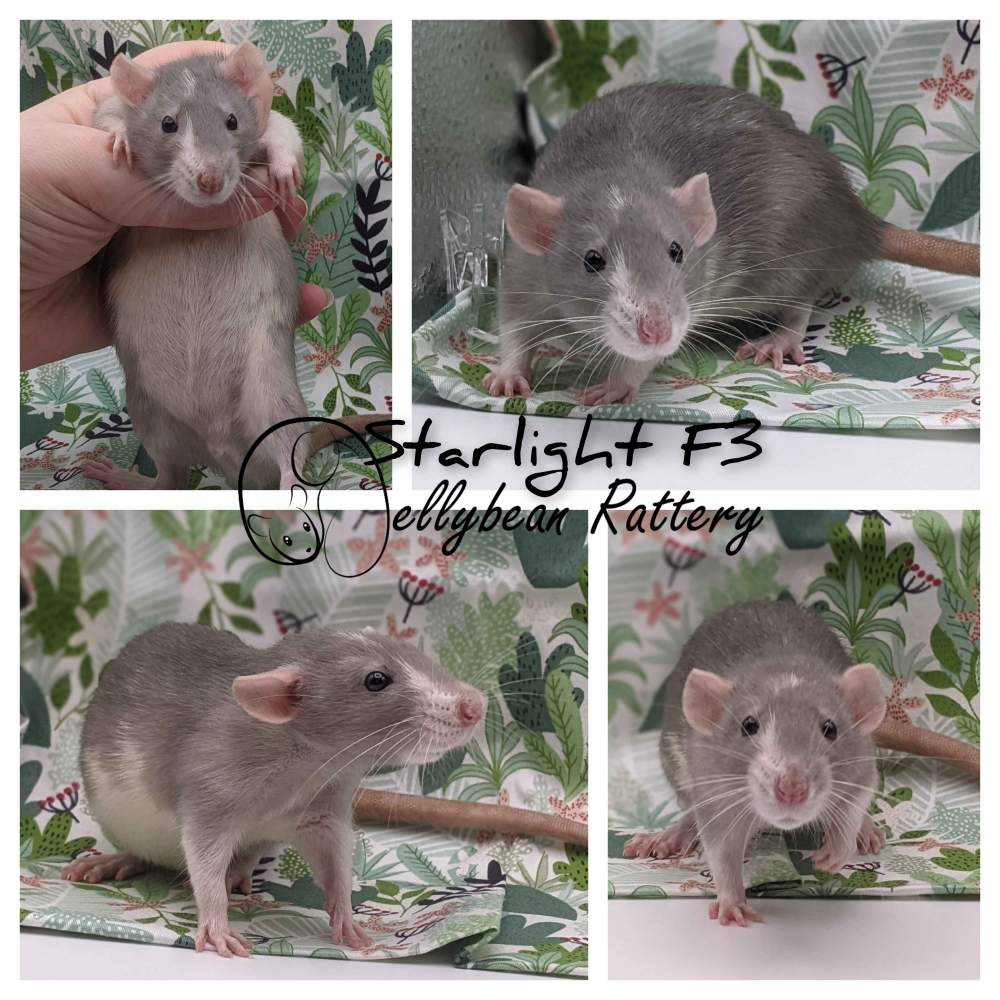
Above, American blue rats. Mine are darker than the average blue.
American blue dilutes black pigment to a cool blue-gray, and often is accompanied by a light undercoat. The shade ranges drastically from a medium gray to light sky blue. American blue is also called blue or British blue. Not to be confused with Russian blue or midnight blue, which are different genes.
Hemophilia - American blue-displaying rats are prone to a bleeding disorder, causing a much longer clotting time. They are more likely to have complications during labor or surgery. This issue is line dependant and can be bred away from. It only displays with American blue-displaying rats, rats from the line that do not display blue will not have this issue. It can be tested for prior to risking a female in pairing by clipping a nail short and timing how long it takes to clot compared to a non-blue and non-RED rat.
Examples: Not visible.
Other
Marble




Above, photos of healthy marbles provided by Ratatouillies Rattery.
Marble causes pigment to fade and clump, creating a marbled appearance. Pigment tends to fade slightly continuously over time.
Malocclusion - Marble rats are prone to brittle teeth, which can cause them to break or grow in the wrong direction. This prevents the rat from being able to grind down their ever-growing teeth and will eventually cause injury to their mouths and inability to eat. This issue can happen at any age and is more likely to happen the older the rat gets. They could have healthy teeth all their lives and develop this late in life, so it is important to continually check their teeth. This issue does not seem to be able to be reliably selected away from, there is always a chance it will happen in a marble rat. It can be made less common by very careful selection by the breeder. Selecting for the teeth that develop a strong enamel the earliest will help breed away from this issue. Select for the babies that have the orangest teeth. White teeth in rats are unhealthy and brittle.
Examples: None available. If someone has an example of malocclusion on a marble and would be willing to allow me to use it as an example, please message me on Facebook or email me! Photos comparing healthy orange teeth and brittle white teeth would also be greatly appreciated.
Dalmatian


Above, images of healthy Dalmatians. First collage provided by Crimson Devils Rattery, second photo provided by Nevermore Rodentry.
Dalmatian is a lethal dominant gene that causes fading pigment, soft feathered marking edges, and some adjustment of marking patterns.
Anasarca - Dalmatian is the only known visual lethal dominant that causes homozygous babies to develop fully. Homozygous Dalmatians are born with anasarca, also known as water babies. They are dramatically larger than normal pups and are at a much higher risk of getting stuck during labor, becoming a risk for both their siblings and their mother. Most lethal dominants are of no concern to breed together. Dalmatian x Dalmatian should be avoided because of this additional risk.
Examples:

Above, examples of pups with anasarca. The bottom left image shows an anasarca pup next to a normal pup for comparison. These photos were generously provided by Crimson Devils Rattery.
Dwarf
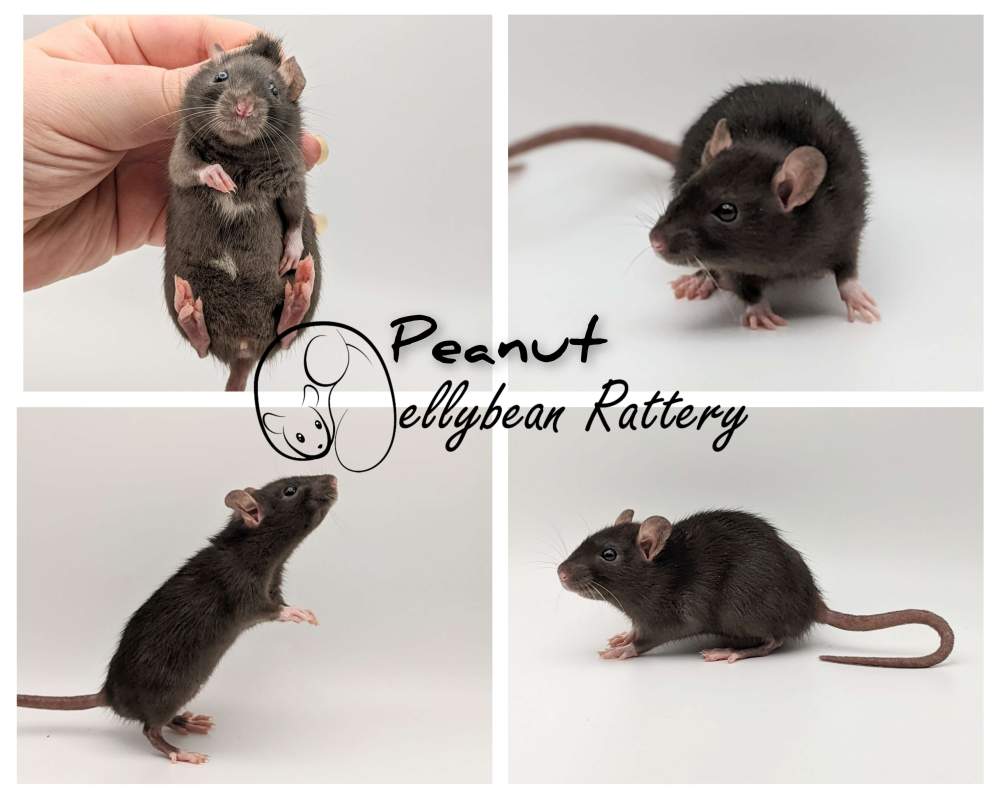
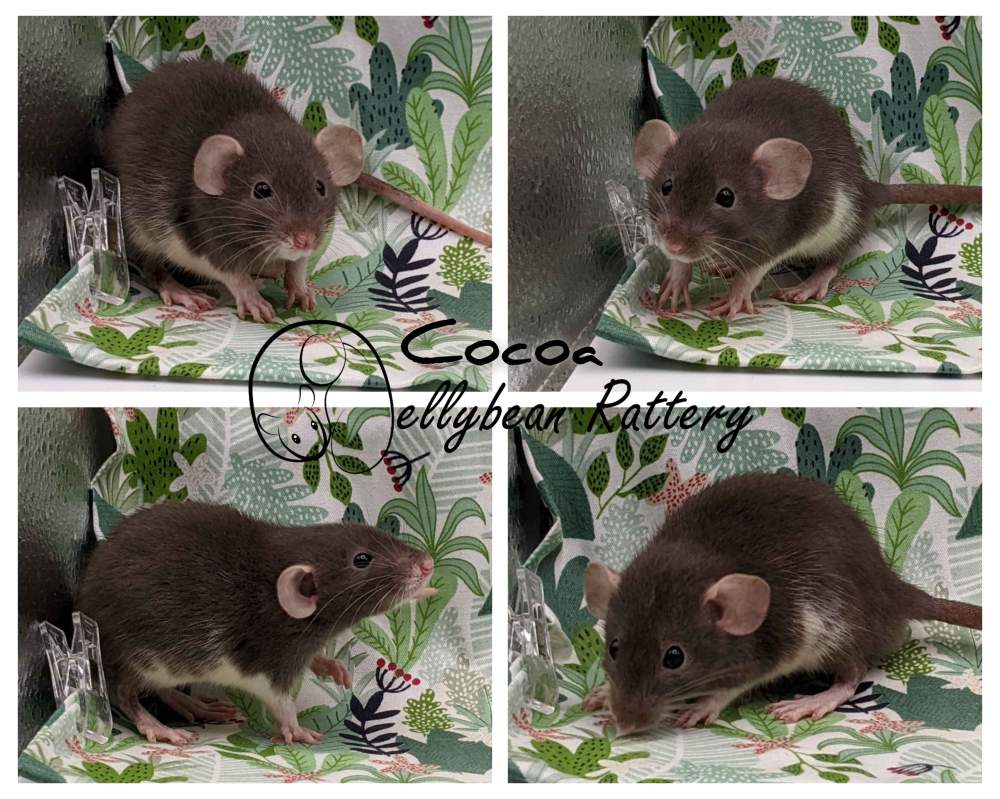
Above, photos of healthy dwarf rats.
Dwarf is a simple recessive in rats. In general, dwarf rats are actually healthier and longer-lived than standard sized rats, and are less likely to develop tumors. Compared to other species, the type of dwarfism in rats is very healthy. However, they can be prone to some issues depending on the line. These issues can be bred away from.
Obesity - Dwarf rats can be prone to obesity. Oftentimes it does not develop until over a year old. When an individual is prone to it, exercise and diet do not seem to have any effect. This can be reliably selected away from.
Penile Prolapse - Male dwarf rats can be prone to penile prolapses in varying severity, sometimes able to resolve on its own and sometimes requiring surgery or euthanasia. This can be reliably selected away from.
Frailty/Micro Dwarf - Some dwarfs always stay very small and frail, regardless of age. They feel notably lighter and more boney than properly sized dwarfs, without much muscle or fat on them. Frail micro dwarf often have weaker immune systems and cannot bounce back after being sick as easily as other rats.
Immune Health - As stated in the Micro Dwarf section, especially small dwarf rats can have weak immune health.
Lactation - Some dwarf lines have difficulty lactating and caring for a litter.
Labor - Due to their size, dwarf females often have difficulty delivering pups. They are prone to having stuck pups and lethargy due to lack of energy stores.

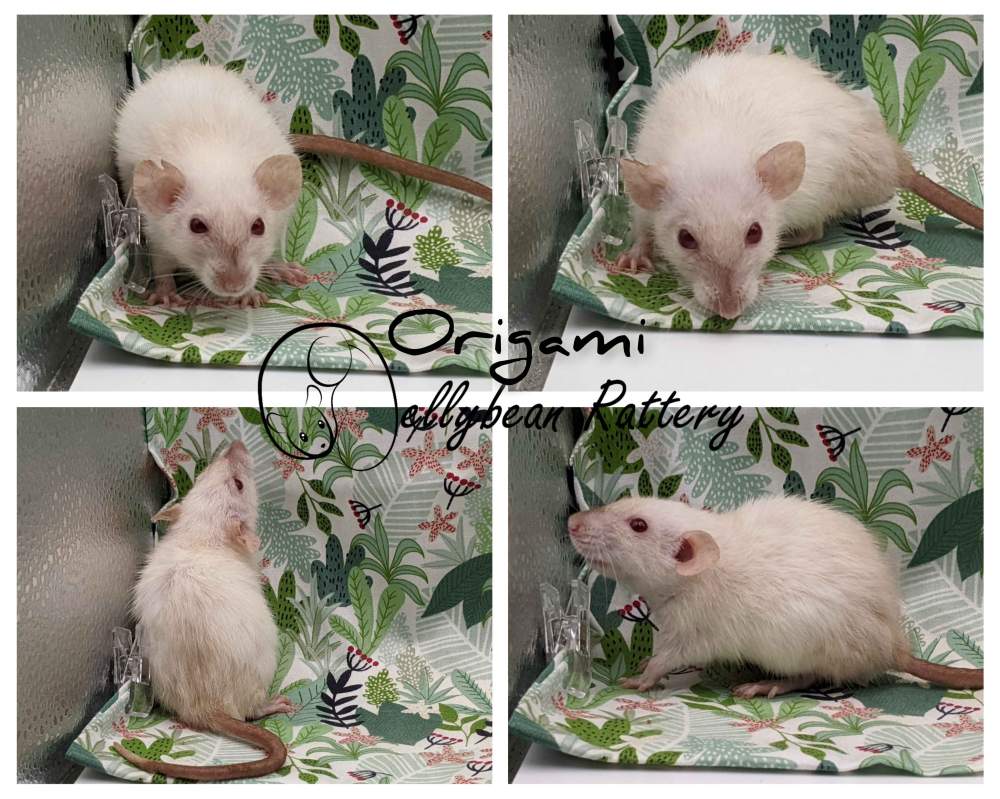
Above, Mera F5 is an example of a micro dwarf with a thin, light build and very little muscle or fat. Origami is an example of an adult micro dwarf who got sick and was unable to bounce back - note her poor coat quality and squinty eyes.

Above, a severe penile prolapse. Image anonymously provided.
Chinchilla (due to DWS involvement)




Above, examples of healthy chinchilla rats provided by Nevermore Rodentry.
Chinchilla is a combination of agouti, fading yellow, and dominant white spotting. The only health concern is due to the involvement of dominant white spotting.
Megacolon - DWS is susceptible to a condition called megacolon, which should be euthanized immediately upon diagnosis. Megacolon is a paralyzation of a section of the intestinal tract, causing the rat to be unable to pass waste so it becomes impacted. It is incurable. This condition almost always develops by 8 weeks of age, sometimes having an onset as late as 12 weeks - very, very rarely it can develop later in life. It appears as extreme bloating and lack of solid stool, often accompanied by a hunched waddling posture, sometimes diarrhea, and urine staining. Sometimes instead of bloating it can appear as a sudden drop in weight, the rat becoming frail. This condition is more likely when the rat is DWS combined with downunder or dalmatian. Megacolon can be selected away from and there have been cases where it was fully bred out of a line, but often becomes reintroduced if the line is outcrossed.
Examples: See examples of megacolon in the Downunder section above.
